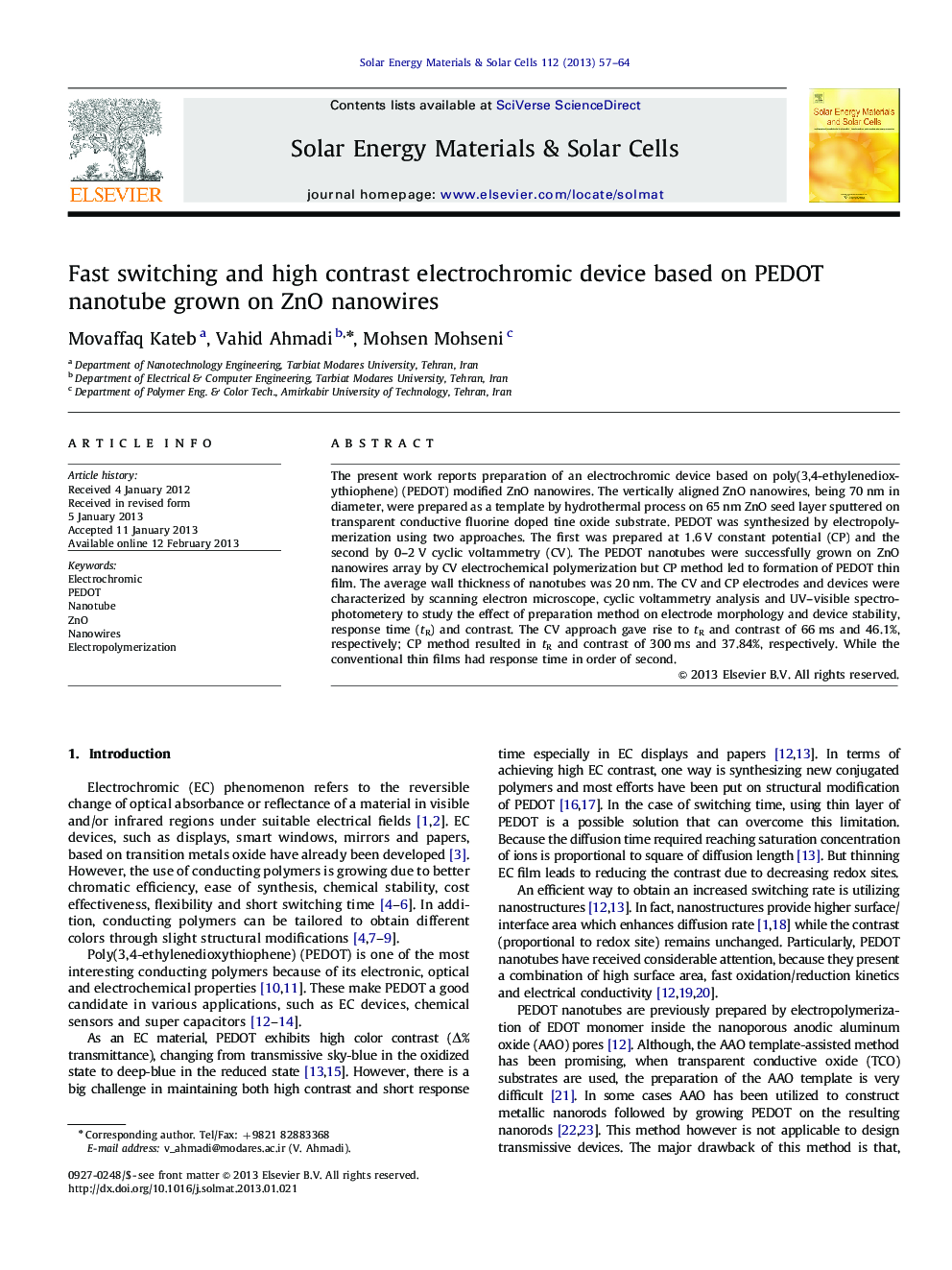| Article ID | Journal | Published Year | Pages | File Type |
|---|---|---|---|---|
| 78521 | Solar Energy Materials and Solar Cells | 2013 | 8 Pages |
The present work reports preparation of an electrochromic device based on poly(3,4-ethylenedioxythiophene) (PEDOT) modified ZnO nanowires. The vertically aligned ZnO nanowires, being 70 nm in diameter, were prepared as a template by hydrothermal process on 65 nm ZnO seed layer sputtered on transparent conductive fluorine doped tine oxide substrate. PEDOT was synthesized by electropolymerization using two approaches. The first was prepared at 1.6 V constant potential (CP) and the second by 0–2 V cyclic voltammetry (CV). The PEDOT nanotubes were successfully grown on ZnO nanowires array by CV electrochemical polymerization but CP method led to formation of PEDOT thin film. The average wall thickness of nanotubes was 20 nm. The CV and CP electrodes and devices were characterized by scanning electron microscope, cyclic voltammetry analysis and UV–visible spectrophotometery to study the effect of preparation method on electrode morphology and device stability, response time (tR) and contrast. The CV approach gave rise to tR and contrast of 66 ms and 46.1%, respectively; CP method resulted in tR and contrast of 300 ms and 37.84%, respectively. While the conventional thin films had response time in order of second.
► Utilizing simple synthesizing technique for device fabrication. ► Obtaining PEDOT nanotube in electropolymerization. ► Visible average contrast of 45.05% for PEDOT nanotube/ZnO nanowire/FTO based device. ► Higher stability and EC efficiency of nanotube PEDOT based device in contrast with its film based device. ► Switching times of 66 ms for PEDOT nanotubes based device at 640 nm wavelength.
